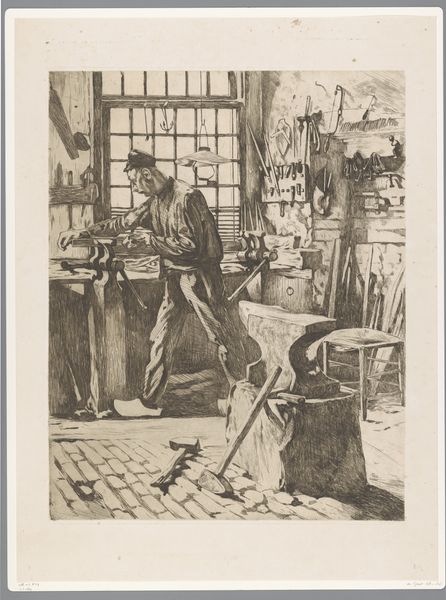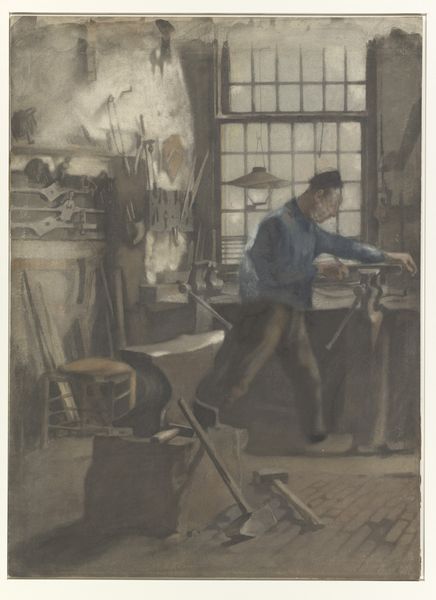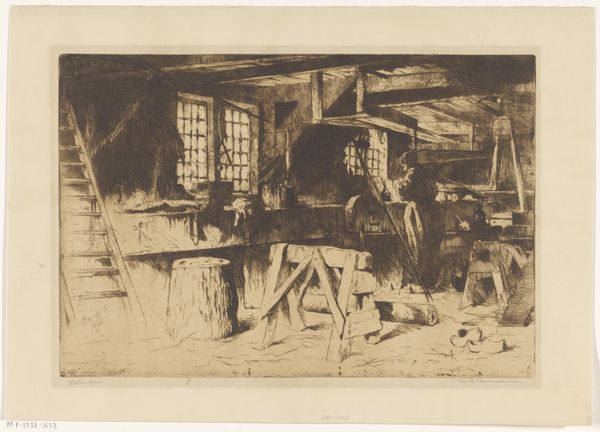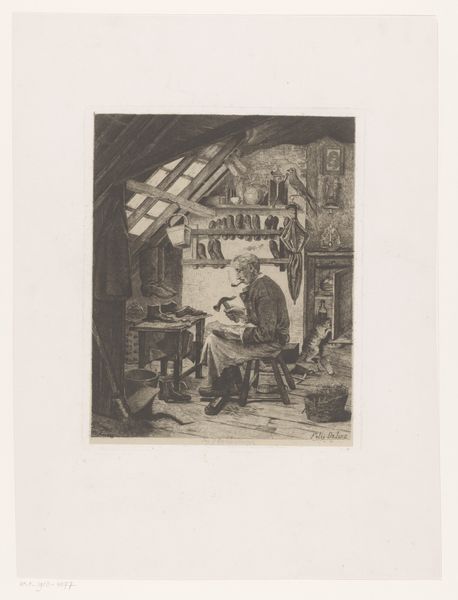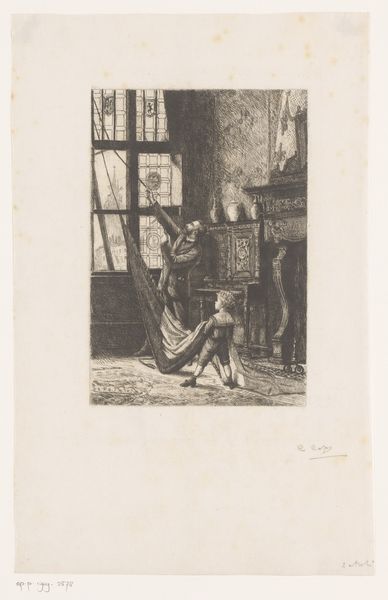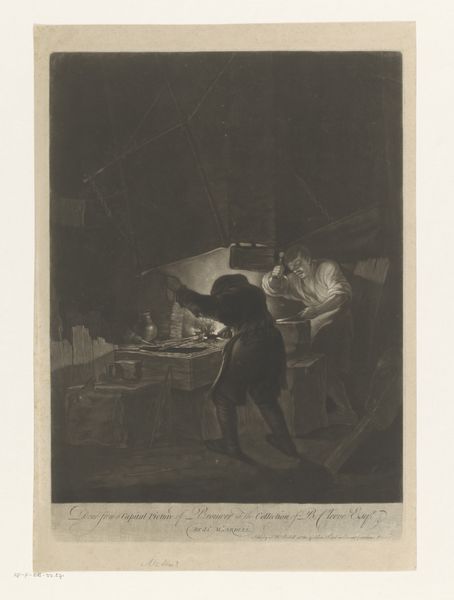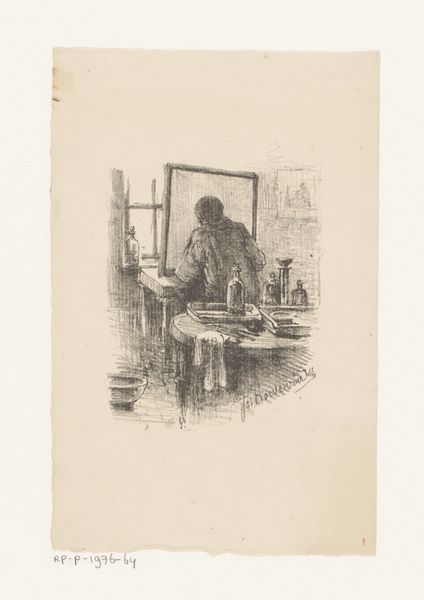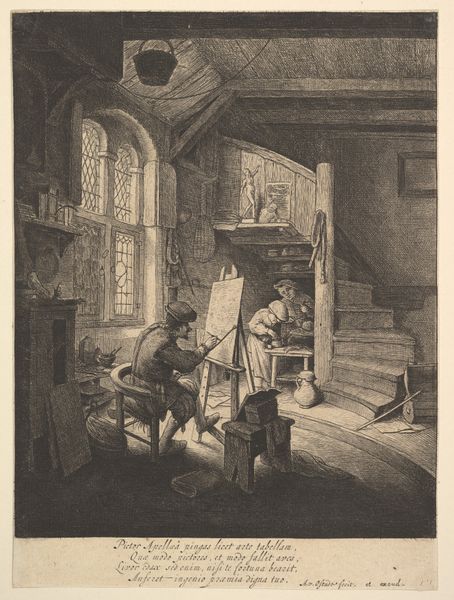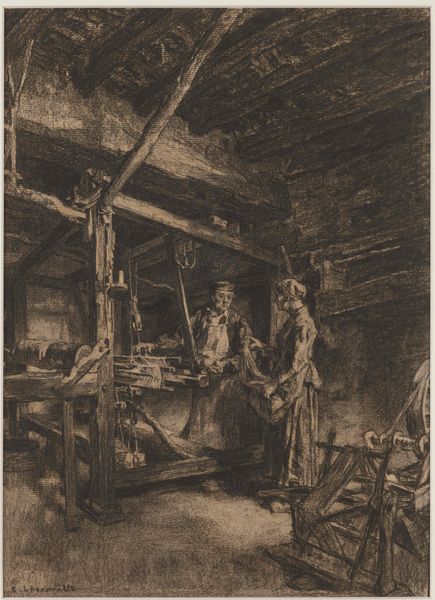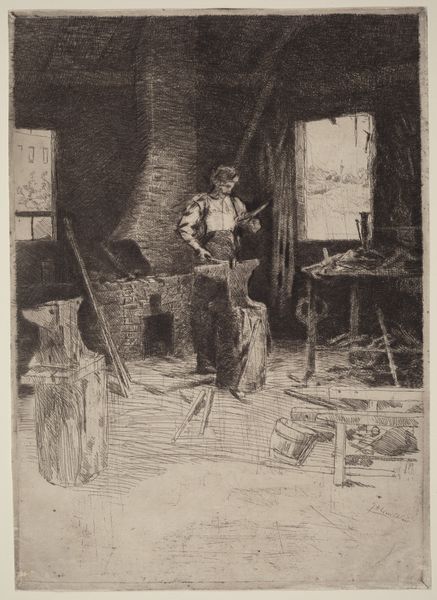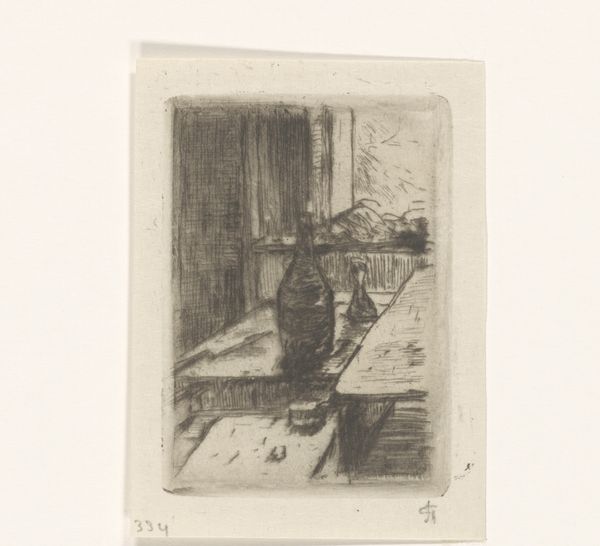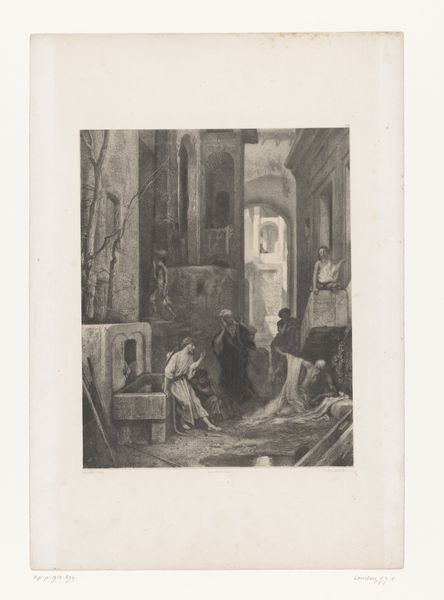
drawing, print, etching
#
drawing
# print
#
etching
#
natural colour palette
#
ashcan-school
#
symbolism
#
genre-painting
#
realism
Dimensions: height 627 mm, width 500 mm
Copyright: Rijks Museum: Open Domain
Curator: Welcome. Today we'll be looking at "Smid aan het werk bij een bankschroef bij het raam," or "Smith at Work by a Vise near the Window," an etching by Willem Witsen, circa 1908. Editor: Immediately striking, isn't it? The composition is a symphony of grays, a tonal exploration of the textures and volumes within the blacksmith's workspace. Curator: It's interesting to see this portrayal of labor. Witsen was a part of the Dutch art movement called the Tachtigers, and while he's often linked to impressionism, this work connects him to the broader realist trend of depicting working-class life. Editor: The lighting is used to great effect, highlighting the laboring figure and his equipment. How interesting the choice of presenting an interior setting, almost like a stage. Curator: Right, we should remember the era. Around the turn of the century, industrial labor was undergoing intense changes. Representations like these carry significant weight, reminding us of the socio-economic realities shaping identities and communities. We see here a lone man; in these early years, laborers worked often without representation. Editor: There's a beautiful contrast, isn't it, between the detail in the foreground—the brick floor, the tools—and the hazier background beyond the window, nature framed by industry. One might use formalism's methods for a deeper exploration into the textures as language for interpretation. Curator: Absolutely, and by situating this within debates around labor rights, class consciousness, and the changing landscape of work, we gain richer insight to this artwork's role and influence. Editor: The artist captured something authentic with this detailed composition and subtle light effects, a celebration of the dignity of manual labor. Curator: It does offer us a unique window into a specific moment and raises larger questions about the place of work in the grand narrative of history. Editor: An admirable combination of representation and a play on tones.
Comments
No comments
Be the first to comment and join the conversation on the ultimate creative platform.
